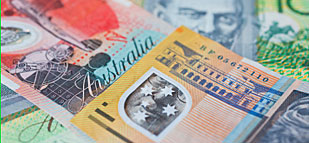
The Australian dollar weakened slightly in early ASia trade with a subdued day ahead as Japanese markets are shut and no data releases on the cards.
AUD/USD traded at 0.9036, down 0.05%, and USD/JPY traded at 102.40, flat.
Overnight, the dollar shot up for a second day after U.S. Federal Reserve Chairwoamn Janet Yellen suggested at a Wednesday press conference that interest rates could rise six months after the Fed's bond-buying program ends.
The Fed is currently buying $55 billion in Treasury and mortgage debt a month, and expectations for the monetary authority to taper that figure gradually and close the program by fall followed by rate hikes in 2015 strengthened the dollar against most other currencies.
Fed asset purchases aim to stimulate the economy by suppressing interest rates, weakening the dollar as long as they remain in effect.
Elsewhere, data on Thursday showed that fewer individuals sought first-time jobless benefits in U.S. last week than markets were expecting, which added to the dollar's gains.
The Department of Labor reported that the number of people filing for initial jobless benefits in the week ending March 15 rose by 5,000 to 320,000 from the previous week’s total of 315,000. Analysts had expected jobless claims to rise by 10,000 last week.
A separate report showed that manufacturing activity in the Philadelphia-region expanded at a faster rate than expected in March,
In a report, the Federal Reserve Bank of Philadelphia said that its manufacturing index improved to a reading of 9.0 this month from February’s -6.3 reading. Analysts had expected the index to rise to 3.8 in March.
On the index, a reading above 0.0 indicates improving conditions, below indicates worsening conditions.
Soft housing data failed to seriously dent the greenback's advance, as markets dismissed the disappointing numbers as the product of rough winter weather.
The National Association of Realtors reported earlier that existing home sales fell 0.4% to a seasonally adjusted 4.60 million units in February from 4.62 million in January.
February’s pace of sales was the lowest since July 2012.
The dollar index, which tracks the performance of the greenback versus a basket of six other major currencies, was flat at 80.35.
No comments:
Post a Comment